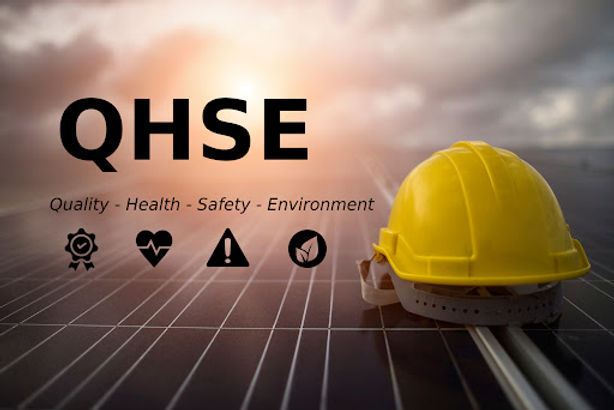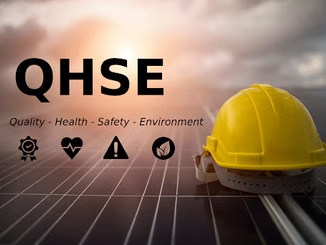In today's rapidly evolving industrial landscape, organizations increasingly recognize the significance of QHSE management systems. QHSE, which stands for Quality, Health, Safety, and Environment, integrates multiple essential components to ensure a systematic approach to maintaining high standards in these critical areas. This comprehensive guide aims to provide an in-depth understanding of QHSE management systems, their importance, implementation strategies, critical standards, and the pivotal role of a QHSE manager.

What Does QHSE Mean and Why is it Important in Management Systems?
Defining QHSE: Key Components and Concepts
QHSE represents a holistic approach encompassing quality, health and safety, and environmental management. Organizations must adopt a QHSE management system that aligns with their operational objectives while adhering to legal requirements and industry standards. By integrating these components, organizations can effectively monitor and control their activities to ensure compliance, mitigate risks, and enhance overall productivity. The essence of QHSE lies in promoting a culture of safety and environmental stewardship, which ultimately leads to improved customer satisfaction and a more sustainable work environment.
Importance of QHSE in Various Industrial Sectors
The importance of QHSE management systems transcends various industrial sectors, including construction, manufacturing, and healthcare. In high-risk environments such as construction sites, a robust safety management system is crucial for preventing accidents and ensuring the health and safety of employees. Similarly, implementing an environmental management system, like ISO 14001, in manufacturing helps organizations manage their environmental impact effectively. The adoption of QHSE principles not only safeguards employees but also enhances an organization's reputation, reduces liability, and improves compliance with regulatory frameworks.
Benefits of Implementing QHSE Management Systems
Implementing a QHSE management system offers numerous benefits, including enhanced operational efficiency, reduced incidents, and improved product quality. Organizations prioritizing health and safety management can significantly minimize workplace accidents, fostering a healthy working environment. Furthermore, by adhering to quality policies such as ISO 9001, organizations can ensure that their products and services consistently meet customer expectations. A well-structured QHSE management system ultimately contributes to a sustainable competitive advantage by elevating an organization's commitment to safety and environmental management.

How to Implement a QHSE Management System Effectively?
Steps for Implementing a QHSE Management System
Implementing a QHSE management system involves several critical steps. Initially, organizations must conduct a thorough audit of existing practices and identify areas for improvement. Following this assessment, it is essential to establish a quality policy that outlines the organization's commitment to QHSE standards. Next, organizations should integrate the components of QHSE into their operational framework, ensuring that all employees are trained and aware of their responsibilities. Finally, regular monitoring and evaluation of the QHSE management system are necessary to ensure ongoing compliance and continuous improvement.
Common Challenges in QHSE Management Implementation
Despite the clear advantages of QHSE management systems, organizations often need help with implementation. Resistance to change is a common obstacle, as employees may hesitate to adopt new practices. Additionally, organizations may need help integrating QHSE components into existing management systems, leading to confusion and inefficiencies. To overcome these challenges, organizations should foster a safety culture and actively engage employees in the QHSE process, ensuring that they understand the benefits of compliance and the importance of their roles in maintaining safety and health.
Using a Checklist for Effective QHSE Implementation
A detailed checklist is one effective strategy for implementing a QHSE management system. It is a practical tool that addresses all essential aspects of QHSE, including compliance with legal requirements, employee training programs, risk assessments, and regular audits. By systematically reviewing each item, organizations can identify gaps in their QHSE system and develop targeted action plans to address them. This level of organization not only streamlines the implementation process but also reinforces the organization's commitment to a culture of safety and environmental responsibility.

What are the Key Standards for QHSE Management Systems?
Overview of ISO 9001, ISO 14001, and ISO 45001 Standards
ISO standards play a pivotal role in QHSE management systems, with ISO 9001, ISO 14001, and ISO 45001 being the most widely recognized. ISO 9001 focuses on quality management, ensuring organizations meet customer needs and enhance satisfaction through effective processes. ISO 14001 emphasizes environmental management, guiding organizations in minimizing their environmental impact and promoting sustainability. Meanwhile, ISO 45001 is dedicated to occupational health and safety, providing a framework for organizations to improve worker safety and reduce workplace risks. Together, these standards create a comprehensive foundation for effective QHSE management.
Comparison Between OHSAS 18001 and ISO 45001
OHSAS 18001 was previously the benchmark for occupational health and safety management systems; however, it has now been superseded by ISO 45001. The transition from OHSAS 18001 to ISO 45001 reflects a significant shift toward a more integrated management system approach. ISO 45001 emphasizes proactive risk management and promotes worker participation in health and safety matters, which aligns with the broader QHSE objectives. Organizations transitioning to ISO 45001 can benefit from its comprehensive framework that integrates seamlessly with other management systems, such as ISO 9001 and ISO 14001.
How to Achieve Compliance with QHSE Standards
Achieving compliance with QHSE standards requires a systematic approach that begins with understanding the specific requirements of each standard. Organizations should conduct regular audits and assessments to evaluate their current practices against these standards. Developing a comprehensive health and safety policy and clear operational activities procedures is essential for ensuring compliance. Furthermore, ongoing training and employee engagement are crucial for fostering a culture of compliance and continuous improvement. By embracing these practices, organizations can effectively navigate the complexities of QHSE compliance and maintain high standards in quality, health, safety, and environmental management.
.

How Does QHSE Management Enhance Safety and Environmental Protection?
The Role of Safety Management in QHSE
Safety management is a fundamental component of QHSE, as it directly addresses the health and safety of employees within the organization. Effective safety management systems identify potential hazards, assess risks, and implement control measures to mitigate those risks. By prioritizing safety management, organizations protect their workforce and enhance overall operational efficiency. A strong safety culture fosters employee engagement and accountability, leading to a healthier work environment and reduced accident rates.
Environmental Management Systems: Key Practices and Benefits
Environmental management systems, such as ISO 14001, are integral to QHSE management as they provide organizations with the tools to manage their environmental impact systematically. Critical practices include conducting environmental impact assessments, setting sustainability goals, and implementing waste management strategies. The benefits of ecological management extend beyond regulatory compliance; they also promote resource efficiency, reduce costs, and enhance the organization's reputation among stakeholders. By integrating environmental management into their QHSE systems, organizations can demonstrate their commitment to sustainable practices.
Integrating Safety and Environmental Management for Better Outcomes
Integrating safety and environmental management practices within the QHSE framework can yield significant organizational advantages. A harmonized approach enables organizations to simultaneously address safety and environmental concerns, fostering a more cohesive management system. For example, safety protocols developed for hazardous materials can align with ecological regulations governing their disposal. This integration streamlines operations and cultivates a culture of safety and environmental consciousness among employees, ultimately leading to better outcomes for the organization and the community.

What is the Role of a QHSE Manager in an Organization?
Responsibilities and Skills of a QHSE Manager
The role of a QHSE manager is critical in guiding an organization toward effective QHSE management. A QHSE manager is responsible for developing, implementing, and maintaining QHSE management systems that comply with relevant standards. They must deeply understand quality management, health and safety regulations, and environmental practices. Strong communication and leadership skills are also essential for fostering a safety culture and ensuring employee engagement in QHSE initiatives. A QHSE manager is a vital link between management and employees, promoting organizational awareness and compliance.
The Impact of a QHSE Manager on Organisational Compliance
A skilled QHSE manager significantly impacts an organization's compliance with QHSE standards. By conducting regular audits and assessments, the QHSE manager can identify improvement areas and promptly implement corrective actions. Their health and safety management expertise ensures that the organization adheres to legal requirements and industry best practices, minimizing the risk of penalties and liabilities. Furthermore, a proactive QHSE manager cultivates strong relationships with regulatory bodies, enhancing the organization's reputation and trustworthiness.
Career Path and Qualifications for Becoming a QHSE Manager
To become a successful QHSE manager, individuals typically need a combination of relevant qualifications and experience. A bachelor's degree in occupational health and safety, environmental science, or a related field is often required. Additionally, certifications such as NEBOSH, ISO 9001, ISO 14001, and ISO 45001 can enhance an individual's credentials and demonstrate their commitment to continuous professional development. The career path for a QHSE manager may involve starting in entry-level positions in health and safety or quality assurance and progressively advancing to managerial roles through experience and demonstrated leadership.
It is important to consult a safety professional before undertaking any of the steps outlined in this article
Author:
Share Article:
Author:
Share Article:

